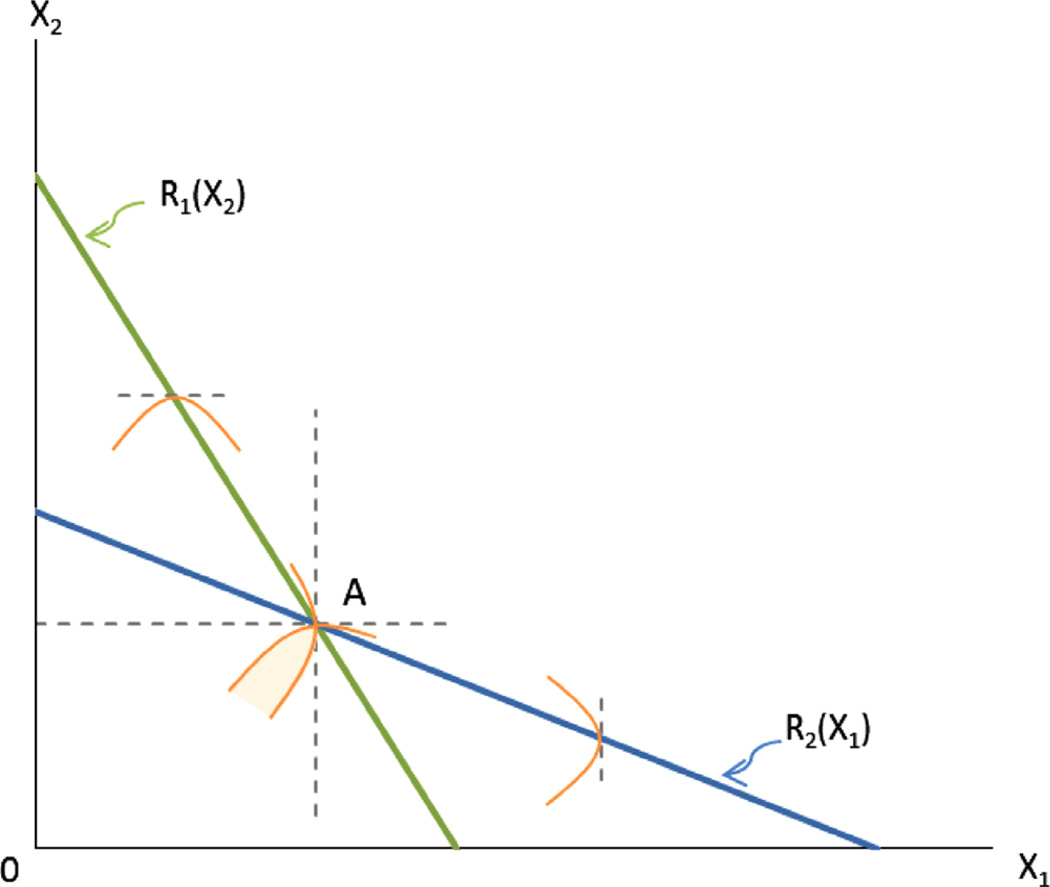Fig. 2.
The straight lines indicate the choices of X that an age 1 or age 2 individual would make in response to a choice by the other. Where the two lines cross at point A the responses would be consistent with both individuals continuing to choose the X values that define point A, so A is a Nash equilibrium. The curved lines are isofitness lines for Ages 1 and 2 individuals, derived from the ϕ1 and ϕ2 fitness functions. Higher fitness values are found closer to the axes. At point A, any small unilateral change in X1 by the Age 1 individual or in X2 by the Age 2 individual would leave the fitness of each unaffected where as a larger move would reduce fitness, since their isofitness curves are tangent to the vertical or horizontal axes at A. Without cooperative action, the system will settle at point A. With cooperative choices, which in our case would be governed by an appropriate mutation affecting the choices of both younger and older adults, Age 1 and 2 individuals could both achieve higher fitness by moving toward the origin within the shaded area. We might think of A as the equilibrium in which Age 1 and Age 2 individuals are each fertile and each feeds and cares for her own offspring. However, with specialization and division of labor, both can achieve higher fitness by assisting one another according to their age-specific comparative advantages.

